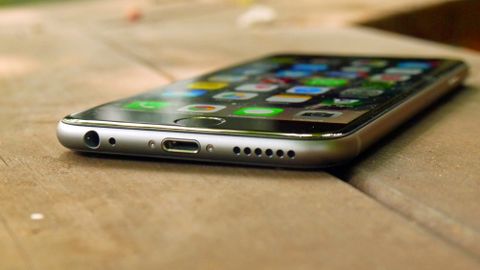Why you can trust TechRadar

As noted above, the camera on the iPhone 6 is an 8MP affair, but with some key upgrades to make it into a more useable device day to day.
The main element is the addition of 'Focus Pixels', which Apple believes will give faster autofocus and improved clarity to your shots.
Faster autofocus is something that's been used to great effect on the LG G4 and the Samsung Galaxy S6, promising to get more of the picture in focus first time out.
The G4 uses frickin' laser beams to manage the task, so Apple's got a pretty lofty goal here. However, the iPhone 6 was been found by DxO Labs to be one of the best cameras of its generation, and I instantly found it to be a superior device for general photography compared to contemporary devices like the Sony Xperia Z3 Compact.
We've seen better camera performance since, of course – and not just from the 12MP iPhone 6S and cheaper iPhone SE. A better option might be the Galaxy S6, which launched after the iPhone 6 and still has one of the best snappers around.
The rear camera is very similar to that found on the iPhone 5S, it has to be said, although given that was one of the better snappers out there this isn't necessarily a bad thing.
- Want to get more out of the iPhone 6 camera? We've got so many tips and tricks for you, we can't even get our heads around it.
The Focus Pixels seemed to help somewhat with getting the clearer picture, but I didn't notice any big jump in functionality compared to the iPhone 5S in that respect. Saying that, I never really thought the 5S was slow to focus, so it's perhaps an issue that didn't need solving urgently.

One extra element Apple has added in is the ability to change the exposure of the photo manually. Simply slide your finger up and down the screen to brighten or darken the shot – well, in theory.
In my testing this seemed to be slightly iffy in terms of registering my desired level accurately - you need to swipe up and down a number of times to really change the level (which could be a good thing in some users' minds, as it allows a fine degree of control) but too often the swiping led to changing the mode from photo to video or other option.

However, the simplicity of the iPhone's camera mode is still very much in effect: the f/2.2 aperture of the sensor is indeed rather good in terms of capturing colour. HDR mode is set to auto by default, but only really pops in when outside with bright sunlight cascading all around. For the most part, it won't fire sadly.
The rest of the interface is largely the same: autofocus and autoexposure can be set with a long press, and the only other modes are timer, flash and the use of filters which show how the photo will look in real time,
The front-facing camera, again as noted, is a big improvement for those that like a good self-portrait. The brightness is higher, the camera is an HD option with built in HDR, and essentially it's now really good for taking photos or video calling a loved one from afar.

The other benefit here is that now iMessage accepts short videos (as Apple attempts to topple WhatsApp) the improved video capability of the front is more useful than ever before.
I'm a big fan of the Slo-Mo feature on any smartphone, and by Apple increasing it to 240 frames per second you can now get some VERY slow and smooth shots.
This is a really good feature if you've ever wanted to see something almost imperceptible to the human eye – by which I mean finding out how stupid your pet looks when shaking its head at high speed.
Other things, like running style, golf swing or how you sneeze are fun reasons to use the function, and while it's nothing groundbreaking, it's a slick and easy to use interface. Why you'd want to go back down to 120fps is beyond me, but the option to change it back is there with a tag in the bottom corner.
The video recording function on the iPhone 6 – which now encompasses 1080p at 60fps – is very clear and almost too real. This is actually great for home movies, giving the sense that you're there, but not so great if you're a budding movie producer with no money wanting to use the iPhone to make your next movie.
I will say this about Focus Pixels in the video – Apple was making a big song and dance about how you don't need to refocus video when moving the camera about.
This is partly true, but mostly if you've got a really clear and bright scene with well-defined distances. Going into close-up, for instance, didn't seem to yield much in the way of a decent shot, with the fuzzy bits still needing to be corrected by a tap.

Gareth has been part of the consumer technology world in a career spanning three decades. He started life as a staff writer on the fledgling TechRadar, and has grown with the site (primarily as phones, tablets and wearables editor) until becoming Global Editor in Chief in 2018. Gareth has written over 4,000 articles for TechRadar, has contributed expert insight to a number of other publications, chaired panels on zeitgeist technologies, presented at the Gadget Show Live as well as representing the brand on TV and radio for multiple channels including Sky, BBC, ITV and Al-Jazeera. Passionate about fitness, he can bore anyone rigid about stress management, sleep tracking, heart rate variance as well as bemoaning something about the latest iPhone, Galaxy or OLED TV.

